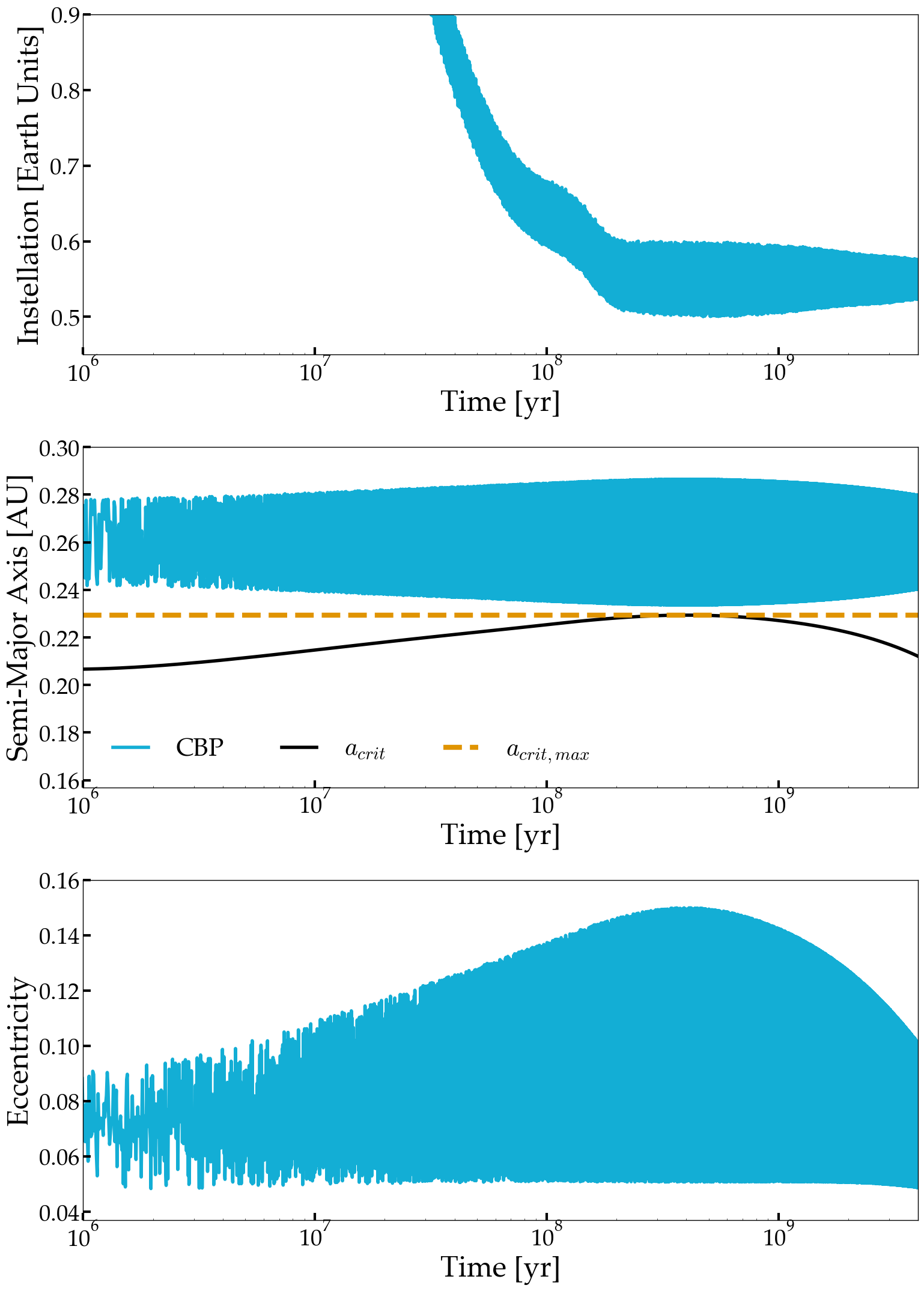Evolution of a Planet Orbiting a Short-Period Binary
Overview
This example shows 5 Gyrs of the orbital evolution of a hypothetical potentially habitrable circumbinary planet orbiting a tidally-interacting 0.5 Msun - 0.1 Msun stellar binary. The orbit of the circumbinary planet (CBP) secularly evolves as the orbit of the central binary evolves due to tides. This case was initially explored by Graham et al., in prep.
Date |
03/04/20 |
Authors |
David Fleming, David E. Graham |
Modules |
BINARY EqTide STELLAR |
Approx. runtime |
45 minutes |
To run this example
vplanet vpl.in
python makeplot.py <pdf | png>
Expected output

Instellation received by the CBP (top), the CBP orbital semi-major axis (middle), and CBP orbital eccentricity (bottom) vs. time orbiting a tidally-evolving 0.5 Msun - 0.1 Msun stellar binary. The binary’s orbit initially expands as stellar rotational angular momentum is tidally transported into the orbit, increasing the CBP’s mean orbital eccentricity, and the amplitude of its eccentricity oscillations. During this period, the CBP experiences larger instellation fluctations, likely impacting its climate. As the binary’s orbit circularizes, the CBP’s mean orbital eccentricity and the amplitude of the eccentricities oscillations both decay. Note that the early expansion of the binary orbit nearly destabilizes the CBP.